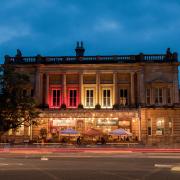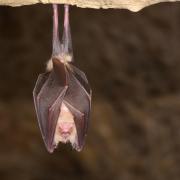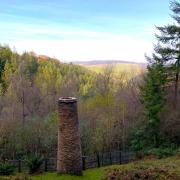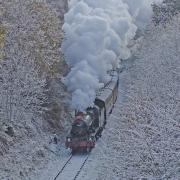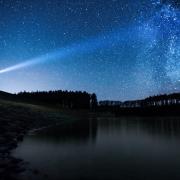When the RSPB took over the Ham Wall site near Glastonbury back in 1994 there was, of course, the small matter of restoring a semi-industrial devastated landscape into the beautiful sea of reeds that you see today but there was always one central aim – to bring back the bittern.
As Steve Hughes, RSPB site manager at the nature reserve, said: ‘The big driver for this was the bittern, that was the big target species we were trying to get, the whole site was designed with bitterns in mind. The idea was that if we get it right for bitterns, we’d get it right for lots of other things as well. That was a long process, an awful lot of research went on, nationally, about what bitterns needed. Despite that they took an awfully long time to get here and it was quite frustrating, people were wondering whether it was ever going to happen.’
Bob Buck, former policeman, and Pete Wood, former engineer, have each been working as volunteers on the RSPB reserve for quarter of a century. Bob proudly produced his RSPB Avocet badge which recognizes his 25 years of service during which time they have planted more than half a million reeds. He describes the initial scene as looking like the Somme with ten-foot craters where peat had been removed.
At the end of the century the bittern was on the verge of extinction. In 1997 there were just 11 booming (mating) males, now there are twice that number on this site alone, 50 in Somerset and 239 in the UK.

‘The reason is that it took that long for the whole reserve to get into balance, the water quality improved and it starts from the most microscopic of plants and invertebrates, then you go up through the food chain to the fish and that’s what the Bitterns eat.
‘In every sense this reserve is a success, it’s a success because we’ve done what we set out to do and it’s a success because people come; we do guided walks, butterfly walks, on Saturday I’m coming down to do pond dipping.’
Come along to the RSPB Ham Wall nature reserve on a Thursday morning and you will spot a whole host of blue chested creatures busily pecking at the landscape – not a rare species of bird but a group of RSPB volunteers in their official polo shirts on their main activity day.

Pete said: ‘What it’s done for me is make me more observant of what’s around, I have expanded my knowledge of wildlife in general. When I do a walk I have a very full folder; all the insects, the mammals and their scat, you don’t see them very much but you see what they leave behind. The majority of people who visit go away thinking “well I’ve learned something today” and that as far as I’m concerned is the satisfying part. You want to be outside, doing something useful, trying to change the world a little bit.’
2008 is seen as the turning point for bitterns and since then the graph has flown up and up but they are not the only success story. Marsh harriers have colonised the area with five nests at RSPB Ham Wall this year alone. The bearded tit is another small victory, these long-tailed birds (with moustaches really not beards) who love to fly over reed beds, are also now more numerous.
Then there’s the great white egret which used to be a subject for twitching. Steve said: ‘They’ve started to colonise the UK but this seems to be an area they’ve really homed in on. There are night herons, cattle egrets, all kinds of things that used to be considered exotic but are now turning up and breeding and becoming more commonplace. It’s the quality of the habitat and the size of the place.’

As Steve said: ‘For me Ham Wall and the surrounding reserves, because there are all these other organisations working beside us, is probably the best wetland in the UK. If you want to work in wetland conservation, why would you want to work anywhere but here. It’s innovative what we’ve done here and what’s happening here. And it’s attracted a whole lot of species that you’re probably not going to get anywhere else.
‘I’ve never taken what I do for granted, I’m very lucky and privileged to get the opportunity to do this for a living. So, I don’t mind the rain or snow, bring it on really. I get to come out here at certain times of day that most people don’t. I really love the early mornings and the evenings, anytime of year. It’s quiet and you see a whole of things that you wouldn’t normally. In winter you see the starlings leaving the roost, in the summer you see the big dragonflys roost, kind of unique to this place.’
Perhaps most importantly: ‘We have brought the bittern back or played a huge part in that.’
WANT TO LEARN MORE?
For more info about the birds at RSPB Ham Wall visit: rspb.org.uk/hamwall
To keep up to date with the latest news you can follow on Facebook and X @rspbhamwall
And for details of future events visit: events.rspb.org.uk/hamwall




